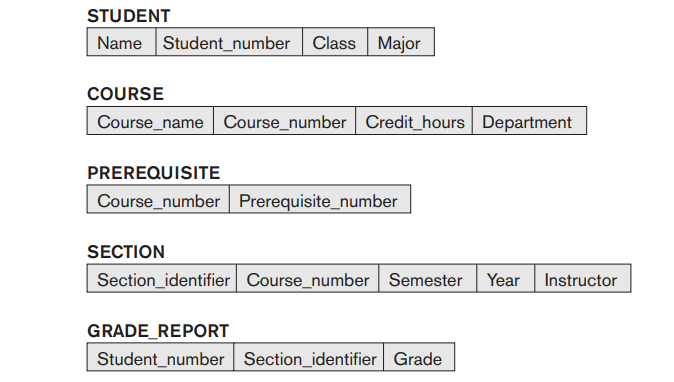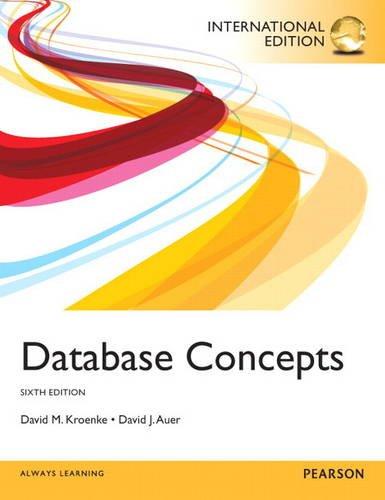Question
In addition to constraints relating the values of columns in one table to columns in another table, there are also constraints that impose restrictions on
In addition to constraints relating the values of columns in one table to columns in another table, there are also constraints that impose restrictions on values within a column or within a combination of columns in a table. One such constraint forces that values within a column or within a group of columns must be unique across all rows in the table. In other words, no two rows of a table will have the same value in within such a column or group of columns. For example, in thetable below, we can designate the Student number column (attribute) to be unique per each student in order to prevent two different students from having the same student number.
Likewise, for each of the other four tables below, identify/designate the column or a group of columns that must have a similar restriction and be unique across all rows in the table? Justify your selections by stating any assumptions that you have made. [ Hint: In order to decide which column or a combination of columns will uniquely identify a row, ask yourself, how many rows could be returned if you provided the values for your chosen column(s). To satisfy this uniqueness constraint, only a single (unique) row must be returned. ]
Step by Step Solution
There are 3 Steps involved in it
Step: 1

Get Instant Access to Expert-Tailored Solutions
See step-by-step solutions with expert insights and AI powered tools for academic success
Step: 2

Step: 3

Ace Your Homework with AI
Get the answers you need in no time with our AI-driven, step-by-step assistance
Get Started


